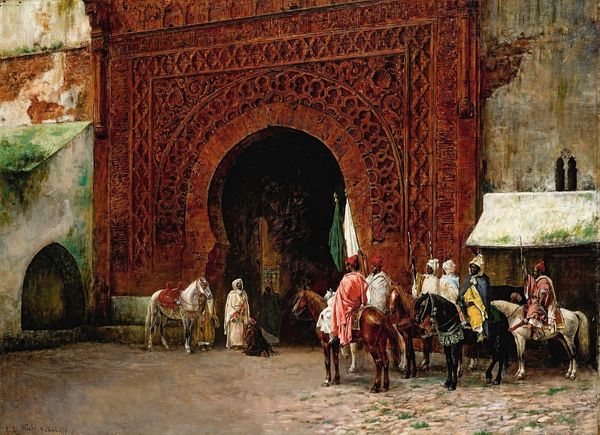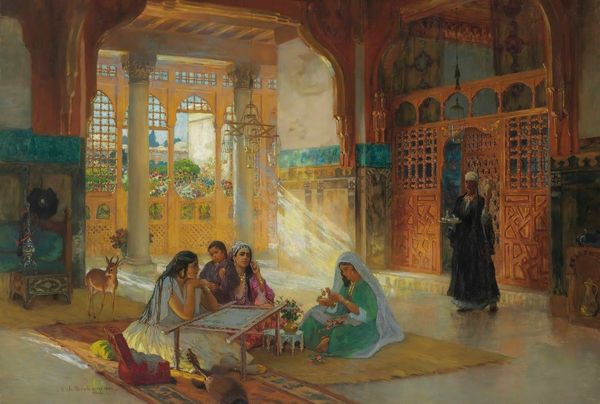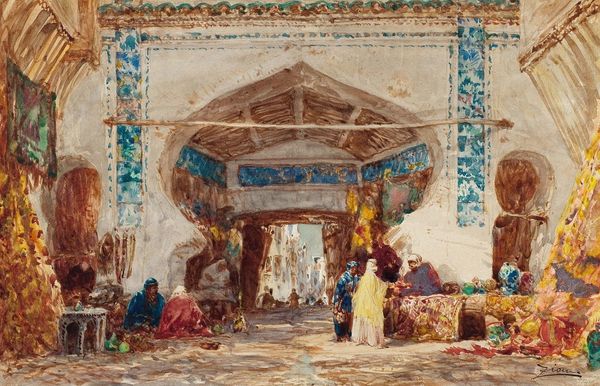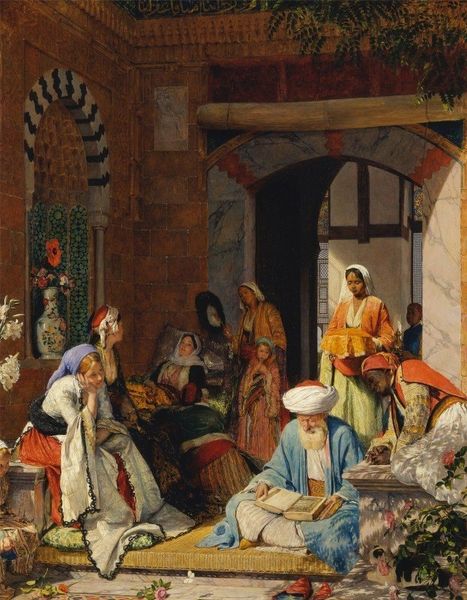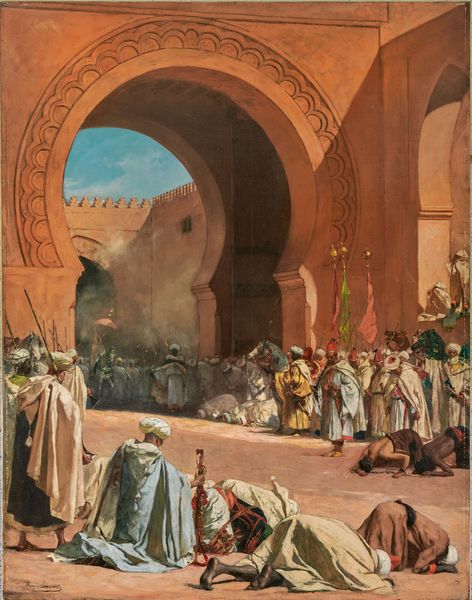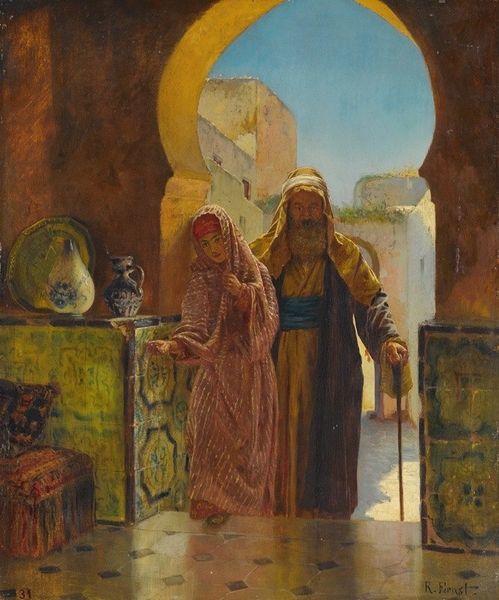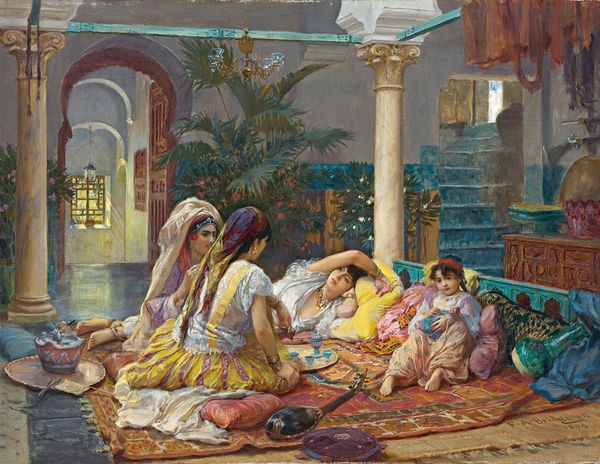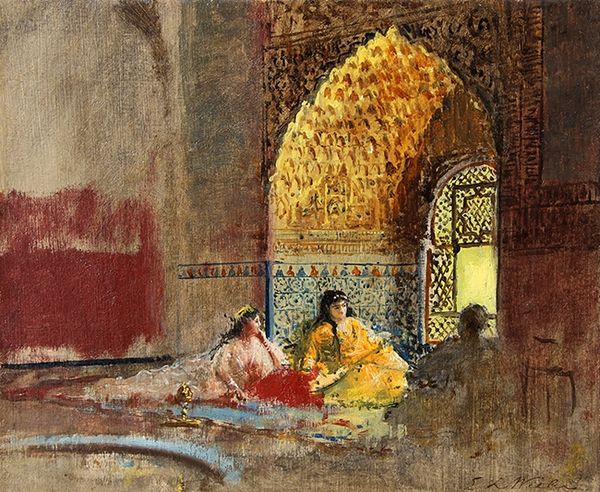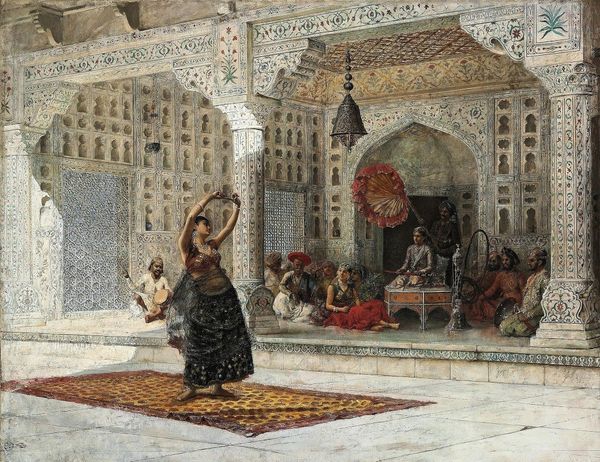
Copyright: Public Domain: Artvee
Editor: So, this is Félix Ziem’s *Sérail à Constantinople, la danse de l’almée,* likely painted between 1880 and 1900. The textures are incredible! I love the golden light, and the figures are just suggested. It's like a memory. How would you interpret this scene? Curator: A memory…that's beautifully put! It strikes me as a dream conjured from exotic travels. Ziem, a master of light, captures Constantinople not as it *is*, but as a shimmering vision. Notice the blurring of the background with that golden, hazy glow and the loose brushwork giving the dancing woman a sense of perpetual motion. Doesn't it feel a little like looking at a stage? Editor: Absolutely! It's theatrical, with that arch acting as a frame. I almost expect the figures to break into song. Was Ziem interested in theatre design? Curator: An interesting hunch! While I can’t confirm his specific involvement in theatrical design, Ziem’s background in architecture certainly influenced his framing of spaces, creating depth and perspective, and feeding his orientalist flair for drama. Tell me, does this romanticised depiction bother you, knowing the historical context of Orientalism? Editor: I think I'm starting to appreciate that even though the image presents an idealized view of the East, its visual power transcends purely historical readings, allowing for a broader exploration of human imagination and dreams. The painter’s romantic license, his selective *remembering*, sparks my creativity even if it skews reality a bit. Curator: Indeed! It’s about understanding that those romanticized glimpses of far-off lands fueled, for better or worse, imaginations – including our own. Plus, look at that light – its beauty still captivates us across time and perspectives.
Comments
No comments
Be the first to comment and join the conversation on the ultimate creative platform.
